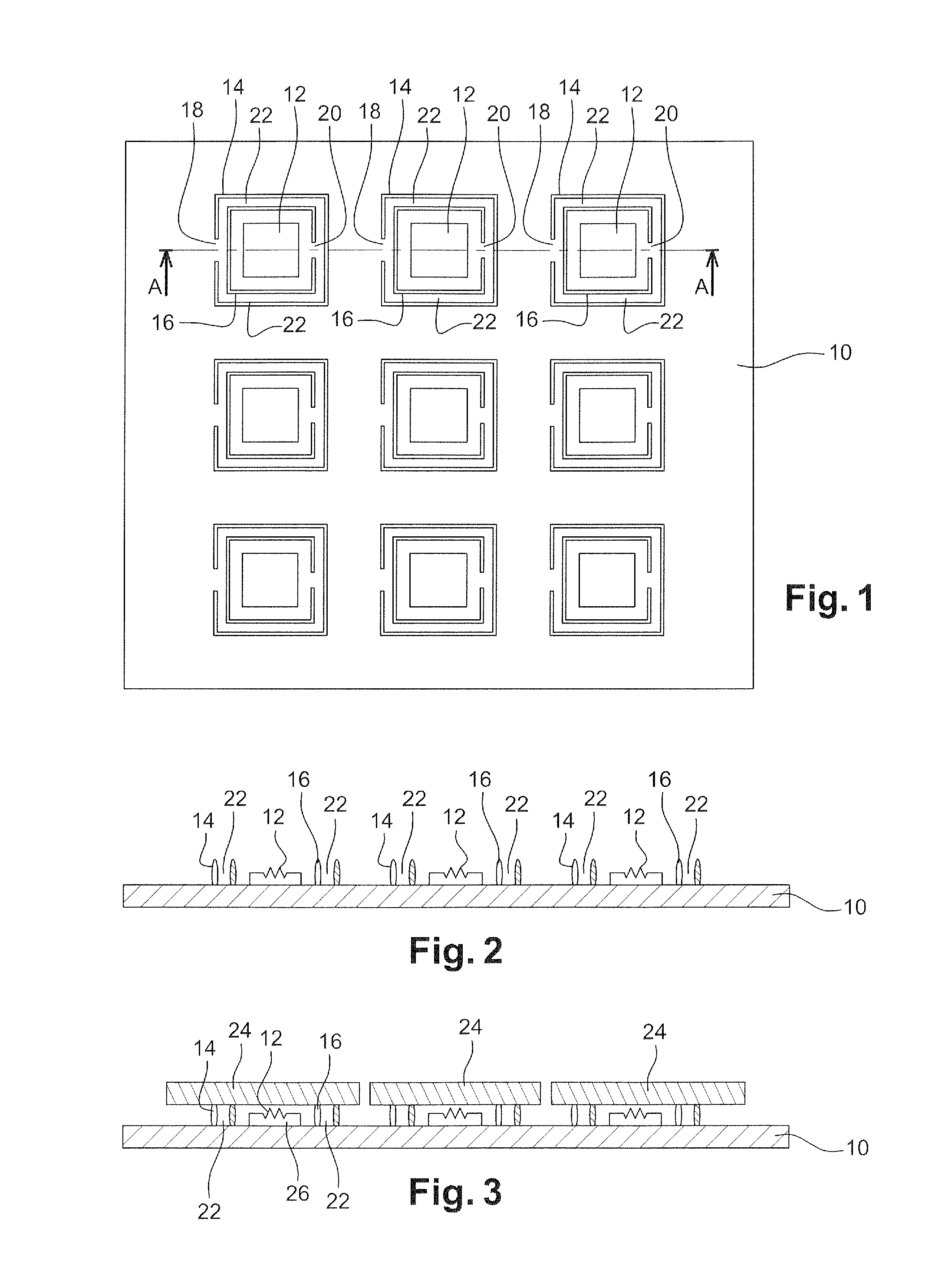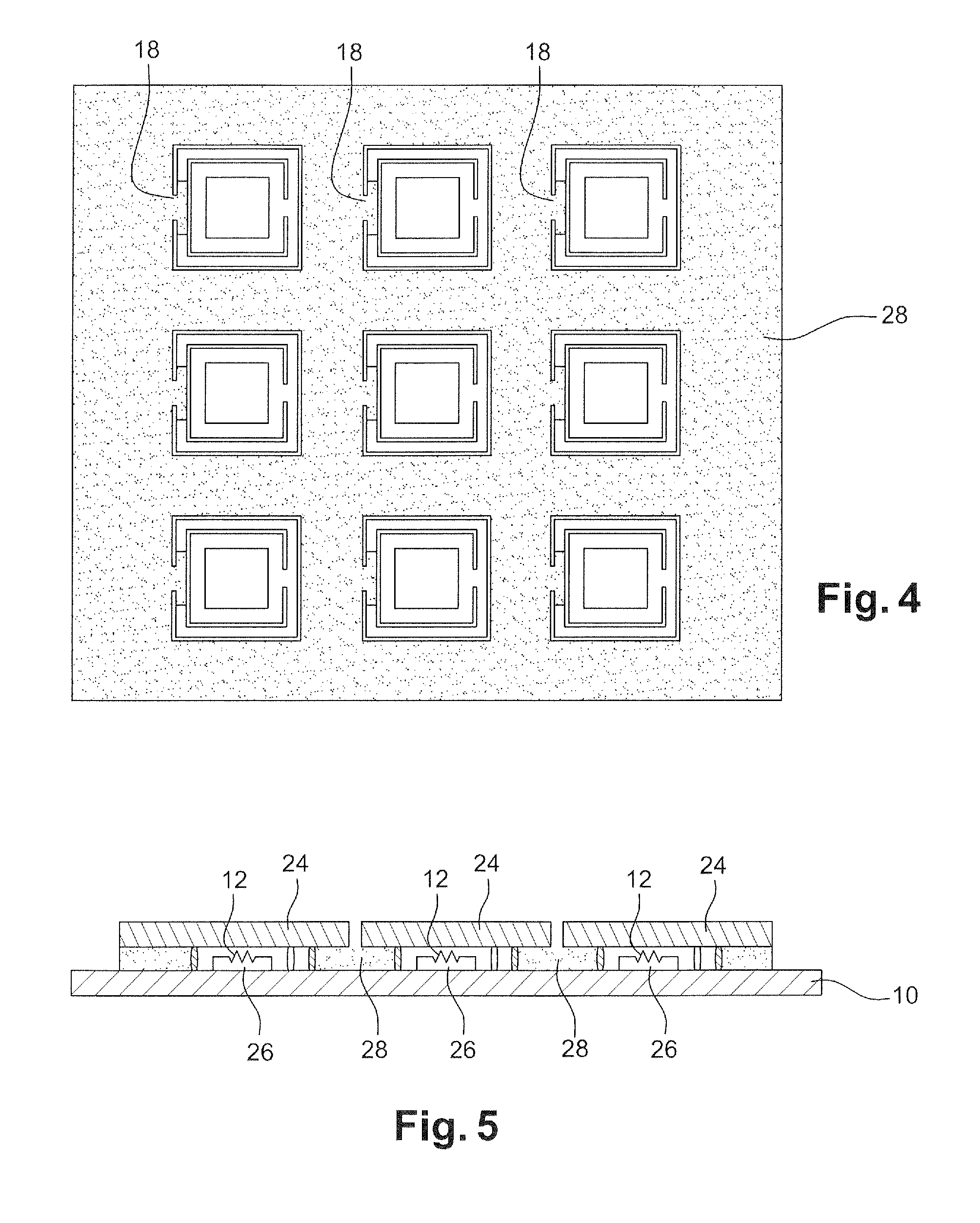Method of flip-chip hybridization for the forming of tight cavities and systems obtained by such a method
a technology of tight cavities and flip-chips, applied in the field of flip-chip hybridization, can solve the problems of inability to apply any type of hybridized components, and the inability to underfill according to the state of the ar
- Summary
- Abstract
- Description
- Claims
- Application Information
AI Technical Summary
Benefits of technology
Problems solved by technology
Method used
Image
Examples
Embodiment Construction
[0044]Referring to FIGS. 1 to 6, a method of an embodiment of the present invention applied to the collective forming of MEMS circuits, for example, an array of three by three MEMS circuits in the drawings, will now be described.
[0045]A circuit based on MEMSs for example comprises a substrate 10 on which or above which are formed MEMSs 12. For their operation, MEMSs 12 require being placed under low pressure, in vacuum, or under a controlled atmosphere. To achieve this, the MEMS circuits are enclosed in a tight cavity. MEMS circuits are well known per se and will not be described any further hereinafter. It should only be reminded that it is needed to provide tight cavities coated with a filling material in an underfilling operation.
[0046]As shown in FIGS. 1 and 2, the method starts with the forming of lateral walls 14, 16 around each MEMS circuit 12 to form:[0047]an external frame 14 closed except for a first vent 18; and[0048]a frame 16, internal to external frame 14, closed excep...
PUM
 Login to View More
Login to View More Abstract
Description
Claims
Application Information
 Login to View More
Login to View More - R&D
- Intellectual Property
- Life Sciences
- Materials
- Tech Scout
- Unparalleled Data Quality
- Higher Quality Content
- 60% Fewer Hallucinations
Browse by: Latest US Patents, China's latest patents, Technical Efficacy Thesaurus, Application Domain, Technology Topic, Popular Technical Reports.
© 2025 PatSnap. All rights reserved.Legal|Privacy policy|Modern Slavery Act Transparency Statement|Sitemap|About US| Contact US: help@patsnap.com



